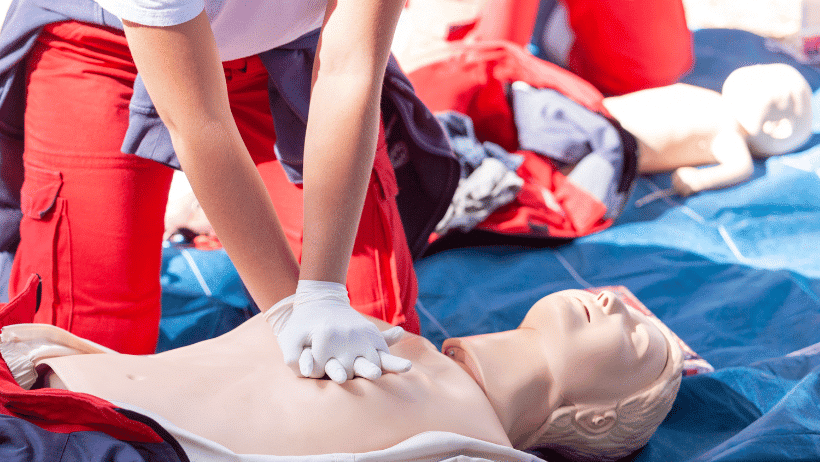Workplace safety is a priority that every business should uphold. Among the many aspects of this comprehensive subject, CPR and first aid training stand out as fundamental components. This blog aims to shed light on their importance in creating a safer, more responsive work environment.
CPR and first aid skills are life-saving tools, not just mere certifications or requirements. They equip employees with the knowledge and confidence to act promptly during emergencies, potentially making the difference between life and death.
Every year, thousands of cardiac arrest cases occur outside of hospitals, including workplaces. Cardiac arrest can happen to anyone, regardless of age or fitness level. Quick and effective CPR can double or even triple the chances of survival after cardiac arrest. By training your team in CPR, you’re preparing them to respond swiftly and effectively in these critical moments.
First aid training also plays a vital role in workplace safety. Accidents can happen anytime, anywhere – from minor cuts and burns to more serious injuries like fractures or concussions. When employees are trained in first aid, they can provide immediate care to injured colleagues before professional medical help arrives. This immediate response can prevent minor injuries from escalating into major ones and can even save lives in more serious situations.
But the benefits of CPR and first aid training go beyond immediate emergency response. These trainings also contribute to building a culture of safety within the organization. When employees see that their employer values their safety and invests in their training, it boosts morale and fosters a more positive work environment. Employees feel more confident knowing they have the skills to handle emergencies, which can also reduce anxiety related to potential workplace accidents.
It’s essential for companies to provide regular CPR and first aid training sessions. Regular training ensures that employees’ skills and knowledge are up to date. The American Heart Association recommends that CPR and first aid certification be renewed every two years, but it doesn’t hurt to have refresher courses in between.
Investing in CPR and first aid training is not just a matter of compliance with safety regulations. It’s an investment in your team’s well-being and a commitment towards a safer workplace. Remember, a safe workplace is a productive workplace.
So, let’s make workplace safety a priority. Equip your team with the life-saving skills of CPR and first aid. Because when it comes to emergencies, having the knowledge and confidence to respond can make all the difference.






